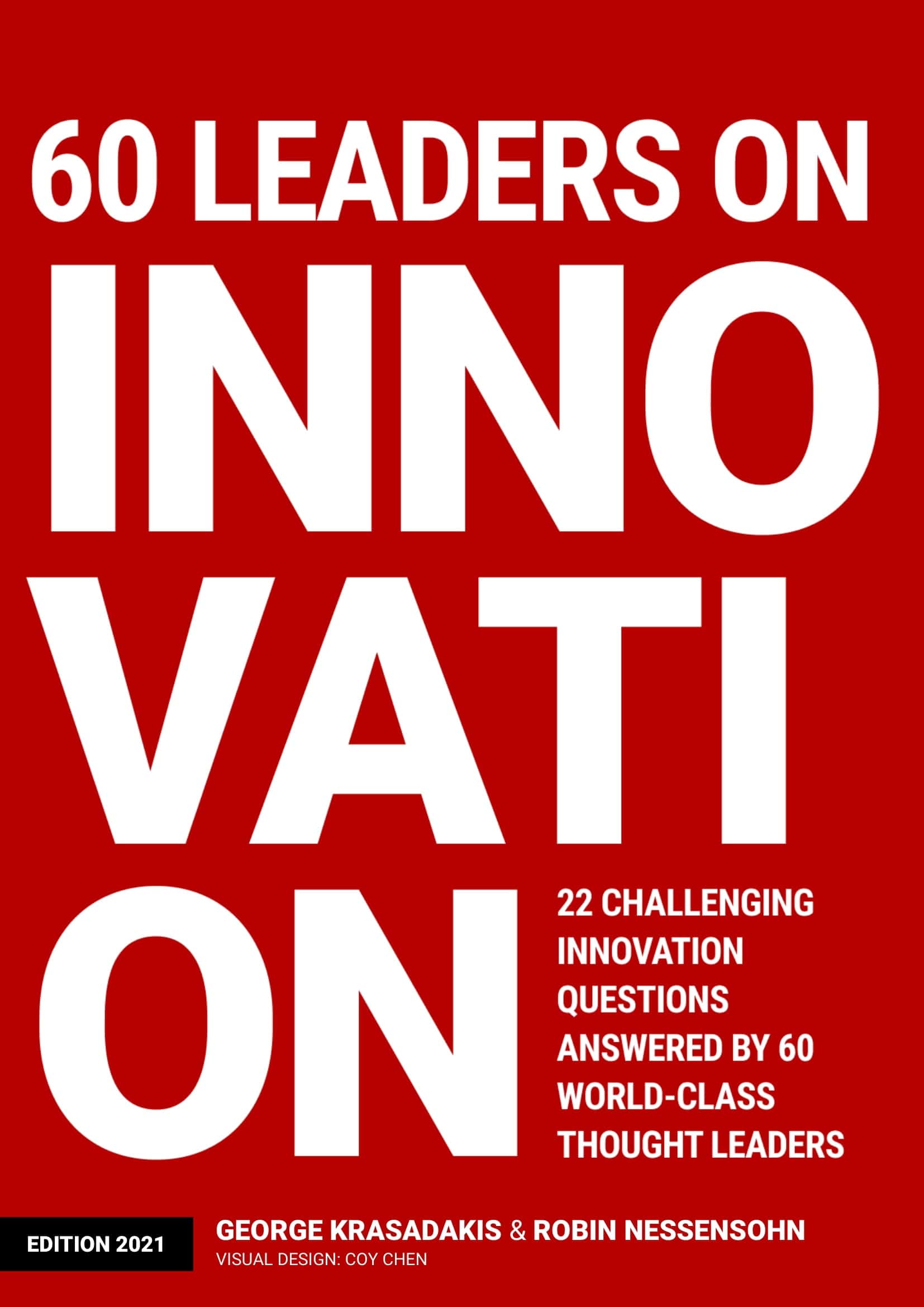You never know when you should say yes to a stranger. I was in residence at Copenhagen Business School, with a lot of back-to-back sessions for the students and the business community stacked close together. In the flurry of activity after one big forum, one of the graduate students rushed forward and introduced himself. He described a project he was working on to bring a group of 60 innovation thought leaders together to publish a book.
Would I be interested in contributing?
A couple of months later, he followed up. Robin Nessensohn turned out to be a natural leader. A person whose sense of possibility + talent for follow through + relationship building DNA combined to distinguish him.
The challenge was to say something about innovation that was fresh, provocative, proven, and practical for corporate leaders.
Saying yes to Robin led to meeting George Krasadakis, and subsequently connected me with 59 fascinating people from all over the world who became 60Leaders—a global community of people who brought their best games to the collaborative publication.
What I came away with was a reflection on What Makes A Company Innovative?
Have a read here or watch the “info snack”* here.
Dedicated to the community of innovators, and to Robin Nessensohn for inspiring me to say “yes”.
*Thank you to Chris Crespo from Nordic Fintech for introducing me to the term: “info snack”
ToolBox
WHAT MAKES A COMPANY INNOVATIVE?
It used to be that the currency for innovation was ideas. But over the past few years—thanks in large part to the successful proliferation of innovation methods like Design Thinking, Open Innovation and Lean Startup— generating ideas, both inside a company and outside the four walls has become the easy part of innovation.
What makes a company innovative is being able to ACTIVATE the right ideas and make them BIG. That requires five things that need to be built into the fabric of an organization:
🔷 OBSERVE AND BUILD MINDSET. Rich capacity for seeing early signs of change and sketching what-if options. EXAMPLE: How many teams saw an exodus from the office and kept patching together piecemeal solutions rather than apply a coordinated observe + build approach?
🔷 SEATS AT THE INNOVATION “TABLE” for the Yes/And Generative Possibility thinkers + the HOW to get it done teams + the ANALYTICS + Deep Dive contributors + the GET PEOPLE ON BOARD groups. That’s what distinguishes the companies that think about innovation from the companies that scale innovation. Innovation activation requires logistics, data, processes, financial instruments, manpower at least as much as it requires idea generation, customer insight, and creativity.
🔷 MASTERY. It’s critical to eliminate cliches and buzzwords and implant a learning capability into the organization. How does the corporate culture inspire people to gain expertise?
🔷 ECOSYSTEM VIEW. As we look at scaling up an initiative, we need to proactively develop new blueprints for how we partner, co-create, and make new markets.
🔷 ELIMINATE STATUS QUO AS THE DEFAULT. To move a transformation forward, we need to do a check of cultural habits that give extra points for maintaining the as-is. Are we inadvertently applying metrics to new initiatives that will always position them as second-class citizens?







